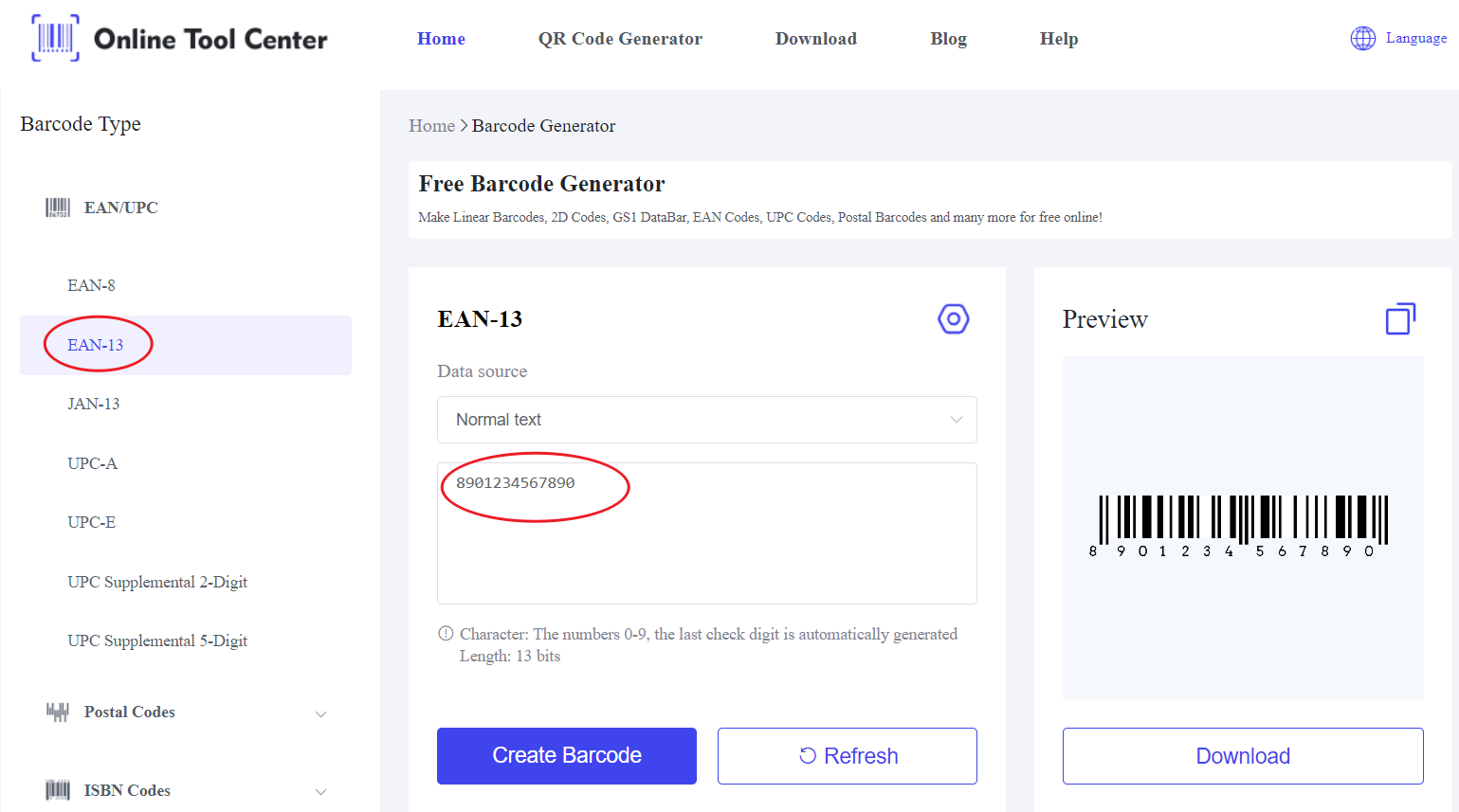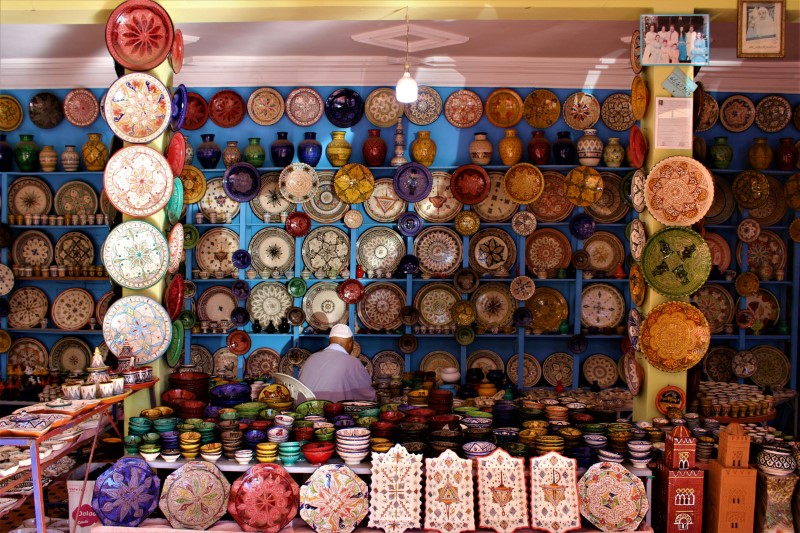In India's rapidly expanding marketplace, barcodes have become an essential tool for businesses of all sizes.
Whether you're a local retailer or an exporter aiming to reach global markets, having a reliable and recognized Indian product barcode is crucial for smooth operations, product tracking, and compliance with both domestic and international trade regulations.
This guide will explain how to get your products barcoded in India, the different types of barcodes available, and examples of how they are used across various industries.
What is an Indian Product Barcode?
An Indian product barcode is a unique identifier assigned to products either manufactured or sold in India.
These barcodes, generally following the EAN-13 (European Article Number) format, are based on internationally recognized standards set by GS1. GS1 India is the authorized body responsible for issuing and maintaining these barcodes in the country.
Here is an example of a standard Indian product barcode number: 8901234567890.
When you obtain a barcode through GS1 India, it includes a Global Trade Item Number (GTIN), which is encoded in the barcode itself. The GTIN helps businesses and retailers worldwide identify your products in a standardized manner.
This system is especially important for Indian businesses that export their goods because a GS1-registered India product barcode is accepted globally, enabling smooth inventory management, product authentication, and customs clearance.
How to Obtain Indian Product Barcodes: The GS1 India Process
Getting a barcode made in India for your products involves a straightforward process through GS1 India. Here's how it works:
1. Register with GS1 India
Start by registering your business with GS1 India. Visit the official GS1 India website and fill out the online application form. You'll be required to submit details such as your business name, address, and the number of products you intend to barcode.
2. Choose a Package Based on Your Needs
GS1 India offers different subscription plans based on the number of products (SKUs) you want to barcode.
For smaller businesses, a lower-tier package is available that covers up to 100 products. Large enterprises with multiple SKUs will need a larger subscription that accommodates several thousand barcodes.
3. Assign GTINs to Your Products
After registration, GS1 India will assign unique GTINs to each of your products. Each variation of your product—whether by size, color, or weight—requires its own GTIN, ensuring that every product is individually traceable.
4. Generate the Barcode
Once you receive your GTINs, you can generate barcodes for your products using software tools or online barcode generators. A convenient option is the free barcode generator, which allows businesses to create EAN-13 barcodes quickly and efficiently. Ensure the barcode is printed clearly on your product labels for easy scanning.

5. Barcode Maintenance and Renewal
GS1 India requires an annual renewal fee to maintain the validity of your barcodes. Ensure that your subscription is kept up-to-date, as expired barcodes may cause issues during shipping, retail scanning, or product recalls.
Common Barcode Types Used in India
Indian businesses primarily use two types of barcodes:
● EAN-13 (European Article Number): This is the most widely used barcode in India, especially for retail products. The 13-digit code ensures compatibility with global retail systems, making it the preferred choice for businesses that export products or sell in retail stores.
● UPC (Universal Product Code): While mostly used in the United States and Canada, some Indian companies opt for UPC barcodes when exporting to North American markets.
In addition to these, QR codes are becoming popular in India for specific use cases such as mobile payments, product promotions, or linking customers to additional product information via smartphones.
Examples of Indian Product Barcodes

1. Textile and Handicraft Exports
Indian textiles and handicrafts are globally renowned, and many businesses have adopted Indian product barcodes to facilitate smoother exports.
For example, a Jaipur-based company specializing in handwoven fabrics faced challenges with managing international shipping and customs.
By implementing GS1 India barcodes, the company could streamline its export process. The EAN-13 barcodes allowed customs officers in Europe to quickly scan and identify the goods, reducing delays and ensuring that shipments reached customers on time.
The barcodes also helped the company manage its inventory more effectively, allowing it to track fabric batches from production to delivery.
2. Pharmaceutical Industry
In India's fast-growing pharmaceutical sector, barcodes play a critical role in ensuring product safety and compliance with international health regulations. Pharmaceutical companies use barcodes not only to track shipments but also to ensure that products meet global safety standards.
A Hyderabad-based pharma company, for example, exports prescription medicines to European and U.S. markets. By using barcodes made in India that comply with GS1 standards, the company ensures that its products can be traced through the entire supply chain, reducing the risk of counterfeit drugs entering the market.
3. E-commerce and Online Retail
Barcodes are essential in the e-commerce sector, where accurate inventory management and product tracking are crucial.
For instance, an electronics retailer in Bengaluru selling phone accessories on Amazon India uses Indian product barcodes to ensure their products are tracked properly through Amazon's fulfillment network. Barcodes not only allow Amazon to manage their stock but also help the retailer maintain accurate records of their inventory and sales performance.
In the fast-moving world of online retail, this accuracy improves the customer experience by reducing the chances of errors in product delivery or returns.
Cost of Registering for Barcodes in India
The cost of obtaining an Indian product barcode depends on the size and needs of your business. GS1 India offers flexible pricing structures based on the number of barcodes required:
● Small Businesses: For companies with fewer products, GS1 India offers packages starting around ₹5,000–₹10,000 ($60-$120) annually, which covers up to 100 barcodes.
● Medium to Large Enterprises: For larger businesses that require more than 100 barcodes, the costs can range from ₹30,000 to ₹1,00,000 ($359-$1197) annually, depending on the scale of the operation and the number of barcodes required.
Additionally, GS1 India requires an annual renewal fee to maintain barcode registration.
Obtaining an Indian product barcode is essential for businesses that want to operate efficiently in today's competitive marketplace. From local retailers to global exporters, barcodes provide a quick and reliable way to track products, manage inventory, and comply with international trade regulations.
For businesses looking to simplify the process, tools like the barcode generator offer a convenient and reliable solution to create compliant barcodes for your products.
By registering with GS1 India and implementing barcodes, your business can ensure smooth operations, reduce errors, and build customer trust, whether selling in India or abroad.





